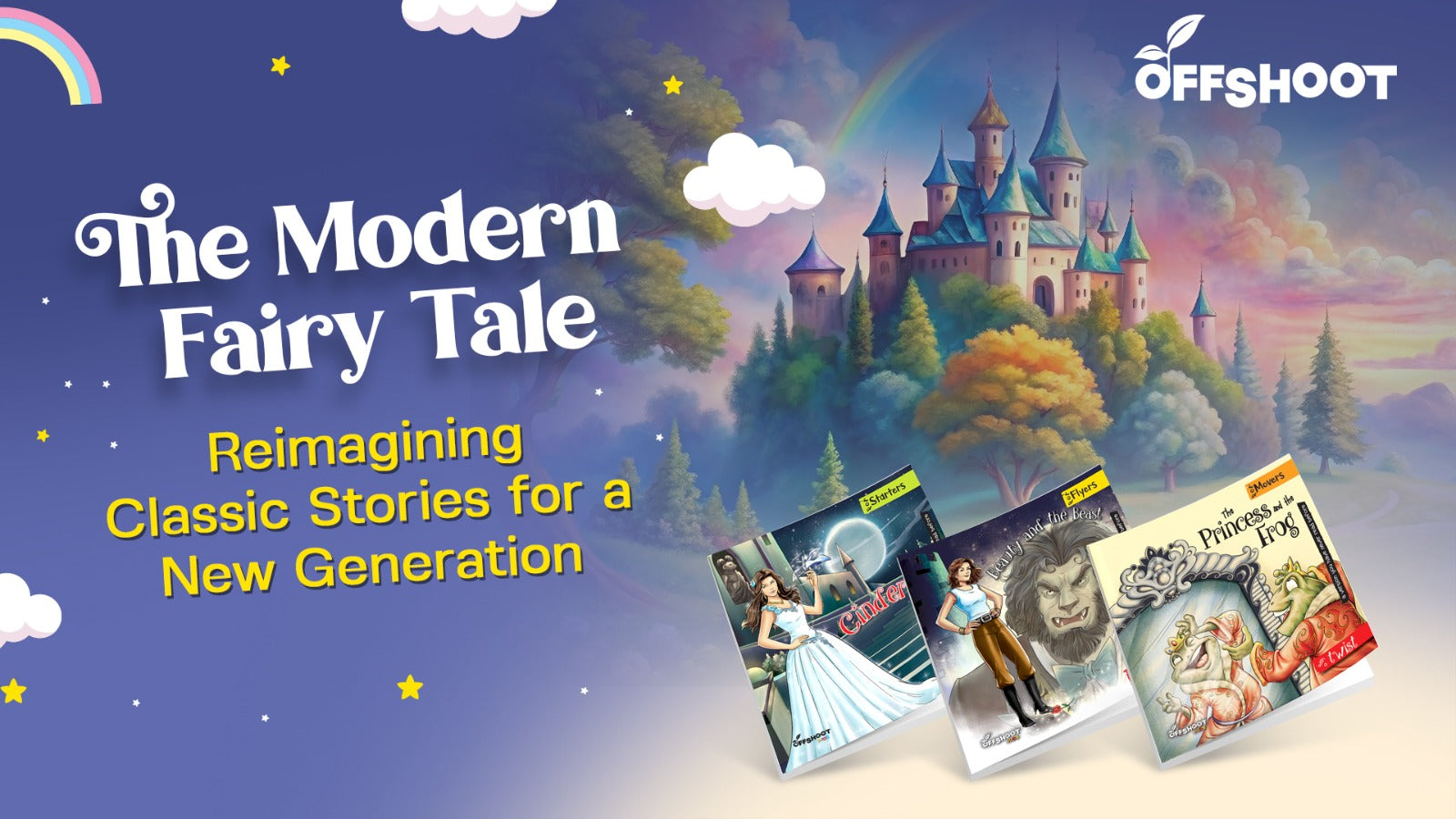
The Modern Fairy Tale: Reimagining Classic Stories for a New Generation
| Offshoot Books
From castles and dragons to magical forests and heroes, fairy tales have captivated children’s imaginations for centuries. Passed down from generation to generation, these stories have served as a window into cultural traditions, values, and dreams. They are filled with adventure, wonder, and lessons about good triumphing over evil.
But while the charm of classic children’s books remains, many traditional tales carry outdated perspectives. Princesses often wait to be rescued, villains are defined by their differences, and happily-ever-after tends to look the same in every story. In today’s world, where inclusivity and individuality are celebrated, these messages can feel limiting. That’s why reimagining fairy tales for modern readers matters—it ensures storytelling evolves along with the values of society.
Why Classic Fairy Tales Need a Makeover
Traditional fairy tales were crafted in times very different from ours. While they hold nostalgia and magic, they sometimes reinforce gender roles, stereotypes, and narrow views of identity. Stories like “Cinderella” or “Sleeping Beauty,” for example, focus heavily on themes of beauty and rescue, rather than bravery or self-discovery.

As children grow, the stories they read shape how they see themselves and the world around them. Learning from tales that emphasize only one kind of hero or one way of living can quietly limit imagination. By creating modern stories that reflect diverse ideas, children can grow up empowered to embrace their individuality and celebrate differences.
Breaking Stereotypes Through Storytelling
Storytelling has the power to shape beliefs, and today, we need stories that break stereotypes rather than reinforce them. A fairy tale that once cast stepmothers as villains, for example, can be reimagined into a more nuanced relationship about blended families. A prince who rescued the princess can become the partner who works alongside her as an equal.
These adaptations don’t take away from the magic—it makes it even richer. When children read unconventional characters who step outside the mold, they learn that bravery, kindness, and cleverness can come in many forms. Girls don’t always have to be princesses; boys don’t always have to be saviors. Instead, both can be curious, adventurous, and compassionate equals.
Inclusive Tales for the Curious Mind
Children today are growing up in a world that is more diverse, connected, and inclusive than ever before. Their books should reflect that reality. Inclusive tales invite children of all backgrounds to see themselves in the characters on the page. Whether it’s diverse skin tones, different family structures, or characters with unique abilities, inclusivity helps kids know they belong in the world of storytelling.
This approach enriches childhood by teaching empathy, acceptance, and confidence. It encourages children to celebrate what makes them unique while respecting and valuing the uniqueness of others. By blending inclusivity with imagination, fairy tales can continue to serve as both entertaining and empowering guides for young minds.
Offshoot Books: Modern Fairy Tales That Inspire
Offshoot Books is reimagining the world of classic children’s books with fresh, engaging twists designed for today’s curious little readers. Their modern stories embrace playfulness while also tackling themes like equality, individuality, and kindness.
Take the What’s in a Name? series and Decked prompts, for example—they show that storytelling can be fun, surprising, and deeply meaningful. With clever wordplay, vibrant illustrations, and storytelling that avoids clichés, Offshoot creates experiences that make children laugh while also helping them think differently about the world.
Most importantly, Offshoot Books makes fairy tales unconventional while keeping their timeless magic intact. The narratives still sparkle with wonder, but the characters are now bolder, freer, and more relatable to 21st-century kids. A fairy tale knight might be a girl in armor, or a princess could choose her own adventure instead of waiting for her destiny.
Examples of Updating Classic Stories
Updating doesn’t mean erasing the charm of traditional stories—it means rewriting them in ways that empower. Some examples include:
-
Cinderella: Instead of only focusing on beauty and rescue, a modern Cinderella could be celebrated for her wit, kindness, or entrepreneurial spirit.
-
Sleeping Beauty: The princess doesn’t simply wait; she dreams, plans, and discovers the power of her own choices.
-
Jack and the Beanstalk: Jack might team up with the giant, turning the tale into a message of friendship and cooperation.
These fresh approaches make fairy tales relevant while keeping their sense of magic alive.
Conclusion: Empowering Kids Through Stories
Fairy tales shouldn’t just belong to the past—they should continue to inspire the future. By embracing modern stories, inclusive tales, and unconventional heroes, we can ensure that children grow up with narratives that reflect the diverse, empowering world we want to build.
Offshoot Books proves that storytelling can honor the charm of tradition while rewriting it for progress. By choosing books that inspire confidence, creativity, and empathy, parents and educators can guide children to become not just readers but dreamers and doers.
So, the next time you reach for a fairy tale, make it one that celebrates individuality, breaks stereotypes, and nurtures the love of storytelling in every child’s heart. Because every generation deserves its own magical stories.

Leave a comment
Your email address will not be published.